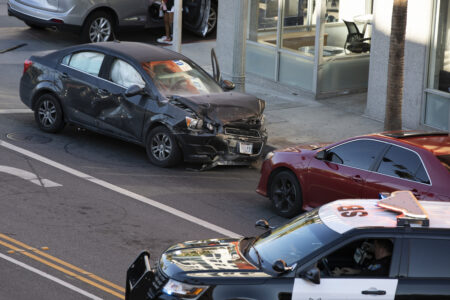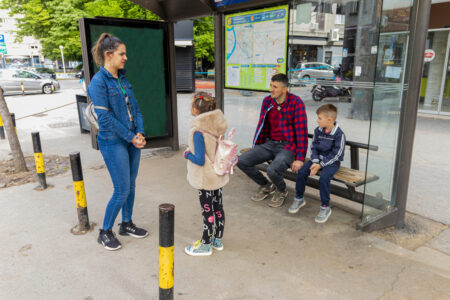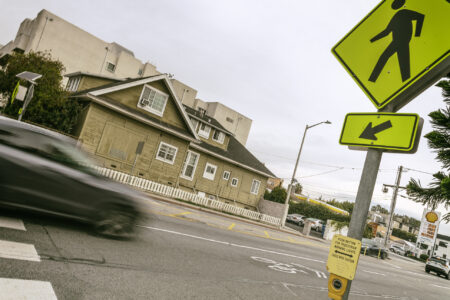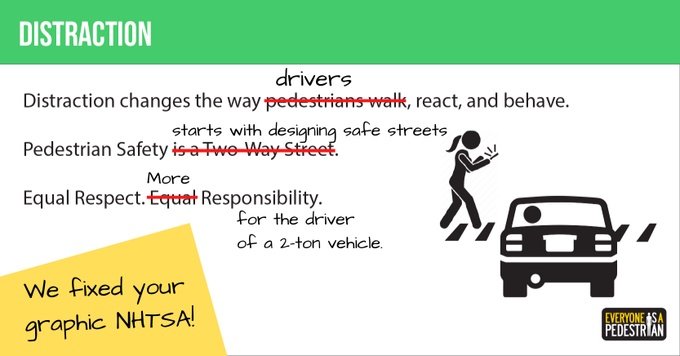
Share On Social!
The National Highway Traffic Safety Administration (NHTSA) is celebrating pedestrians by designating October as the first-ever Pedestrian Safety Month and creating a playbook with social media materials to raise awareness.
This is good, because pedestrians deserve safety on a road, parking lot, or crosswalk.
But it’s not all good. NHTSA is mostly focused on individual pedestrian safety, as opposed to systemic policy changes.
This is a form of pedestrian-blaming.
By blaming the pedestrian, like in victim-blaming or justifying inequities, Pedestrian Safety Month actually distracts from efforts to address the very transportation systems that endanger pedestrians in the first place.
We are excited to see that Transportation for America’s Twitter thread that modified NHTSA graphics to reflect the need for a focus on systems rather than individuals.
“NHTSA’s pedestrian-blaming playbook massively misses the point and completely excludes people with disabilities,” Transportation for America tweeted.
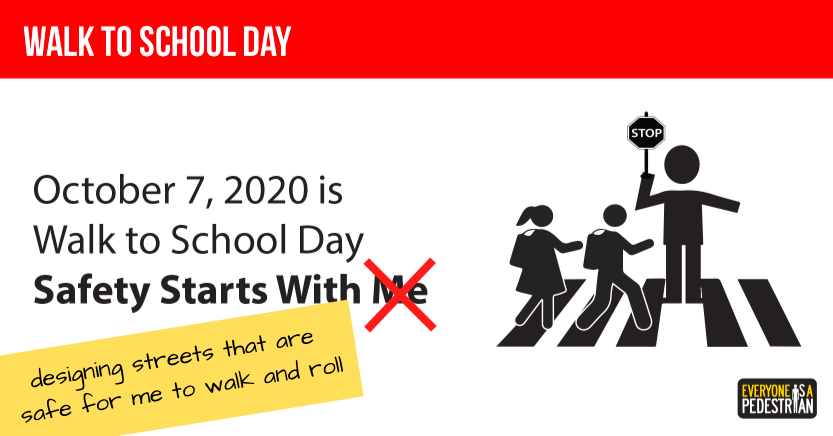
How Pedestrian-Blaming and System Justification Set Us Back
Many people are ready to call out problems with the transportation system when it comes to traffic congestion. They are willing to push local and state leaders to spend tens to hundreds of millions of dollars to widen just a handful of roads.
Yet, when it comes to pedestrians dying on our roads, where are these folks?
Suddenly, the transportation system is fine and the blame falls on the “nut behind the wheel” or the person crossing the street rather than the system. This is known as system justification.
System justification is a theory that suggests people will rationalize the status quo. They believe social, economic, and political systems must be fair and advantageous, otherwise they would not be in place, according to a Salud America! Research Review.
They may even believe in and justify systems that are unfair and causing harm because system justification addresses the fundamental human need to reduce uncertainty, threat, and social discord.
This belief is problematic because it can hinder efforts to promote justice.
Our transportation system is neither fair, nor advantageous.
We have gotten traffic safety all wrong, which is why the traffic death rate has gone up although people have been driving less since the COVID-19 pandemic began.
Focusing on Transportation System Failure
Our transportation network kills more than twice as many people per capita as the following high-income countries: New Zealand, Canada, France, Japan Germany Spain, Switzerland, United Kingdom, and Sweden.
This illustrates that the problem is systemic, not individual, thus calls for systemic solutions.
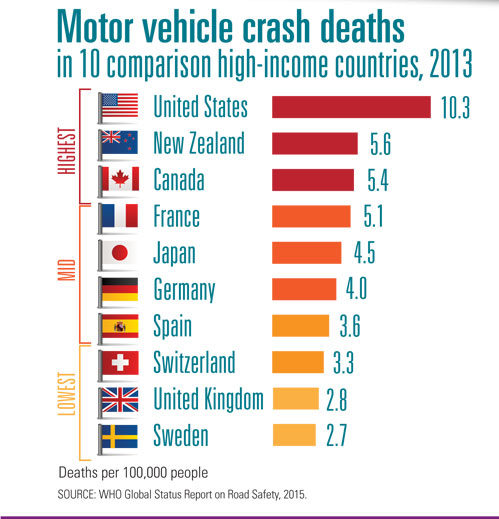 Blaming individual Americans within this dangerous system can interfere with systemic efforts to save lives and make transportation safer for pedestrians.
Blaming individual Americans within this dangerous system can interfere with systemic efforts to save lives and make transportation safer for pedestrians.
At local level, in San Antonio, for example, 33% of severe pedestrian injuries occur on just 1% of roadways. This shows a systemic problem, not an individual one, and requires systemic solutions. But focusing on changing behavior of people who walk distracts from those solutions.
Both empirical research and natural experiments have demonstrated that systemic efforts to reform streets work.
That’s why the leading global pedestrian safety network, the Vision Zero Network, focuses on system failure, not individual failure.
Two European cities, for example, invested in systemic solutions and cut pedestrian deaths to zero in 2019.
Oslo, Norway and Helsinki, Finland reduced speed limits, changed street design, and redistributed space for cars to space for people. As a result of these systemic solutions, zero sons, daughters, sisters, brothers, fathers, mothers, and friends were killed while walking or biking in these two cities.
It can be uncomfortable to question the status quo, but the status quo is failing.
And when a national transportation agency comes out with a pedestrian-blaming playbook, it is time to speak up against transportation system failure.
Playbook Actually Blames Pedestrians
NHTSA’s Pedestrian Safety Month playbook includes sample press releases, links to research and resources, and downloadable graphics.
The playbook is split into four sections, one for each week of the month:
- Speed, Walk to School Day
- Distracted Walking, Impaired Pedestrians
- Illegal School Bus Passing
- Conspicuity/Daylight Saving Time: Older Drivers
This reveals a clear focus on pedestrian behavior, rather than failures of the transportation system, and neglects to mention people with disabilities.

Although the playbook calls attention to the need for drivers to obey posted speed limits, this is misleading. Speed is the problem, not merely speeding. A pedestrian has a 50% chance of survival if struck by a vehicle at 35 mph whether the posted speed is 30mph or 40mph. Additionally, posted speed limits and road designs have been set to antiquated standards from rural areas in the mid-1900s.
A distracted pedestrian is nowhere near as lethal as a distracted motorist. One is vulnerable and one is operating and protected by an average 4,000-pound vehicle.
Messaging that suggests equal respect and equal responsibility is negligent.
“Educational campaigns that chastise pedestrians, will do nothing to create safer streets for children, the elderly, or people vision impairments, each of who experience challenges similar to the effects of distraction,” according to transportation researchers at Rutgers.
Instead of calling for safer streets, NHTSA calls for individuals walking to carry flashlights and wrap themselves in fluorescent tape. It calls for children to make eye contact with motorists.
Ultimately, the NHTSA failed to acknowledge the biggest player in safety: road design.
If transportation agencies actually wanted to create a transportation system that is equitable for everyone, they wouldn’t spend time drafting press releases and crafting graphics that notify the public that older adults are overrepresented in pedestrian crashes without providing any systemic improvements on how to address the issue.
Just because they have a certain degree or hold a certain office, does not mean they are making decisions in your best interest.
Remember how housing and highway policies and practices segregated and destroyed low-income communities of color, until changes tried to interrupt those inequitable systems?
That’s where you come in.
What you Can Do
Question who came up with speed limits in your community, how, and when.
Question how much public space is allocated for vehicles compared to public space for people.
Urge your leaders to find answers to these questions.
Urge your leaders and urban and transportation planners to ensure that all policies, projects, and communications is inclusive of Latino needs, representative of existing inequities, and responsibly evaluated and measured. These are the three key considerations to equitable systems change, according to recent Salud America! Transportation workgroup findings.
Stand up to NHTSA’s misleading, pedestrian-blaming messaging and share graphics and tweets from Transportation for America’s Twitter thread.
Explore More:
Transportation & MobilityBy The Numbers
27
percent
of Latinos rely on public transit (compared to 14% of whites).

